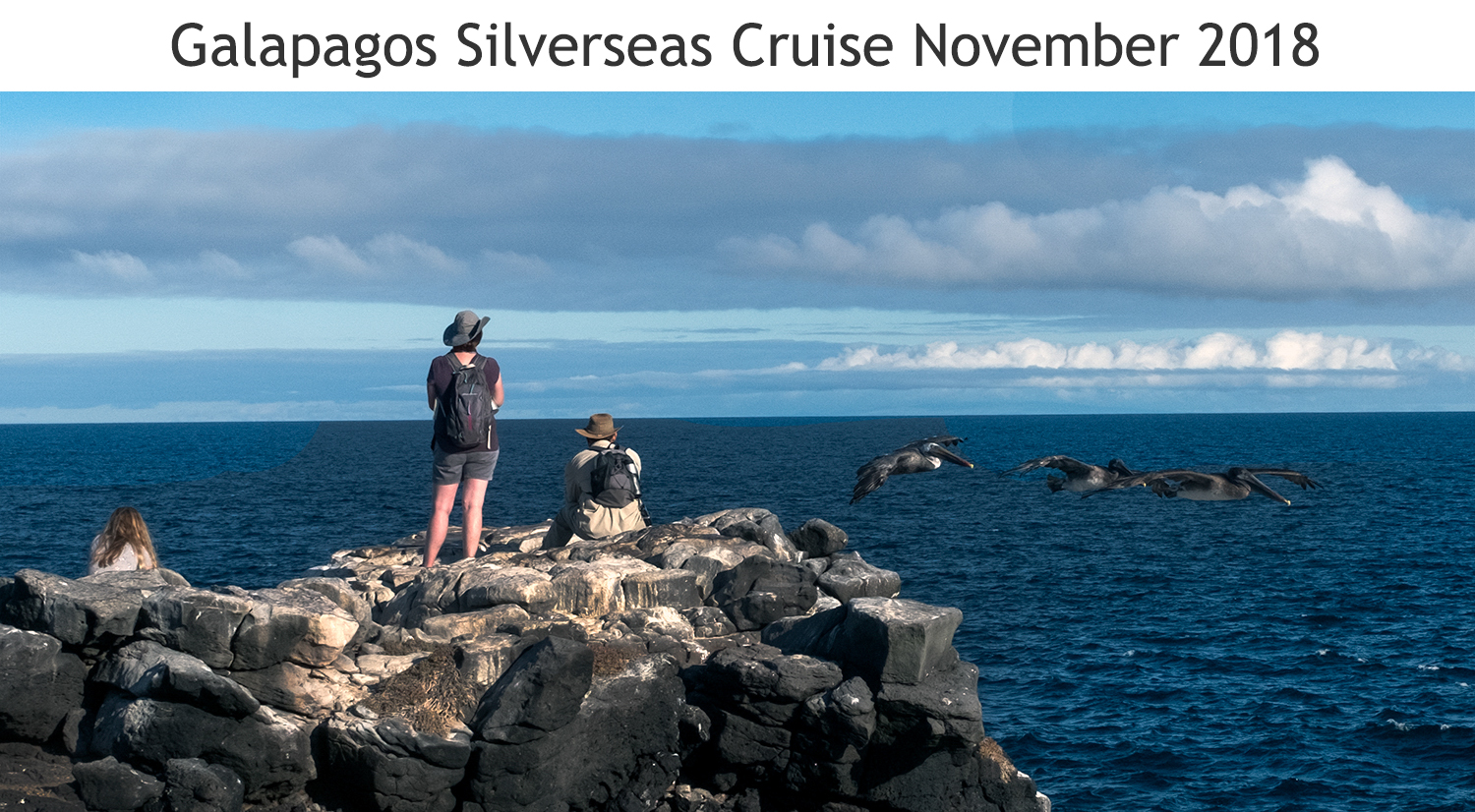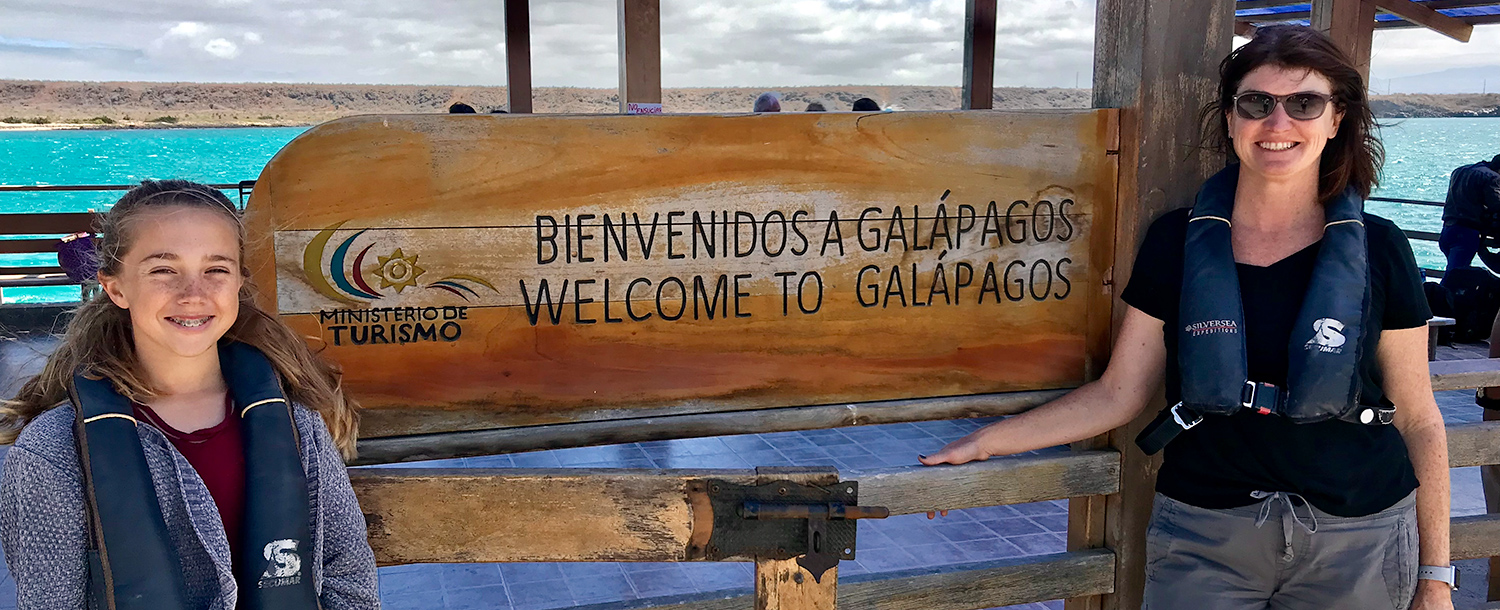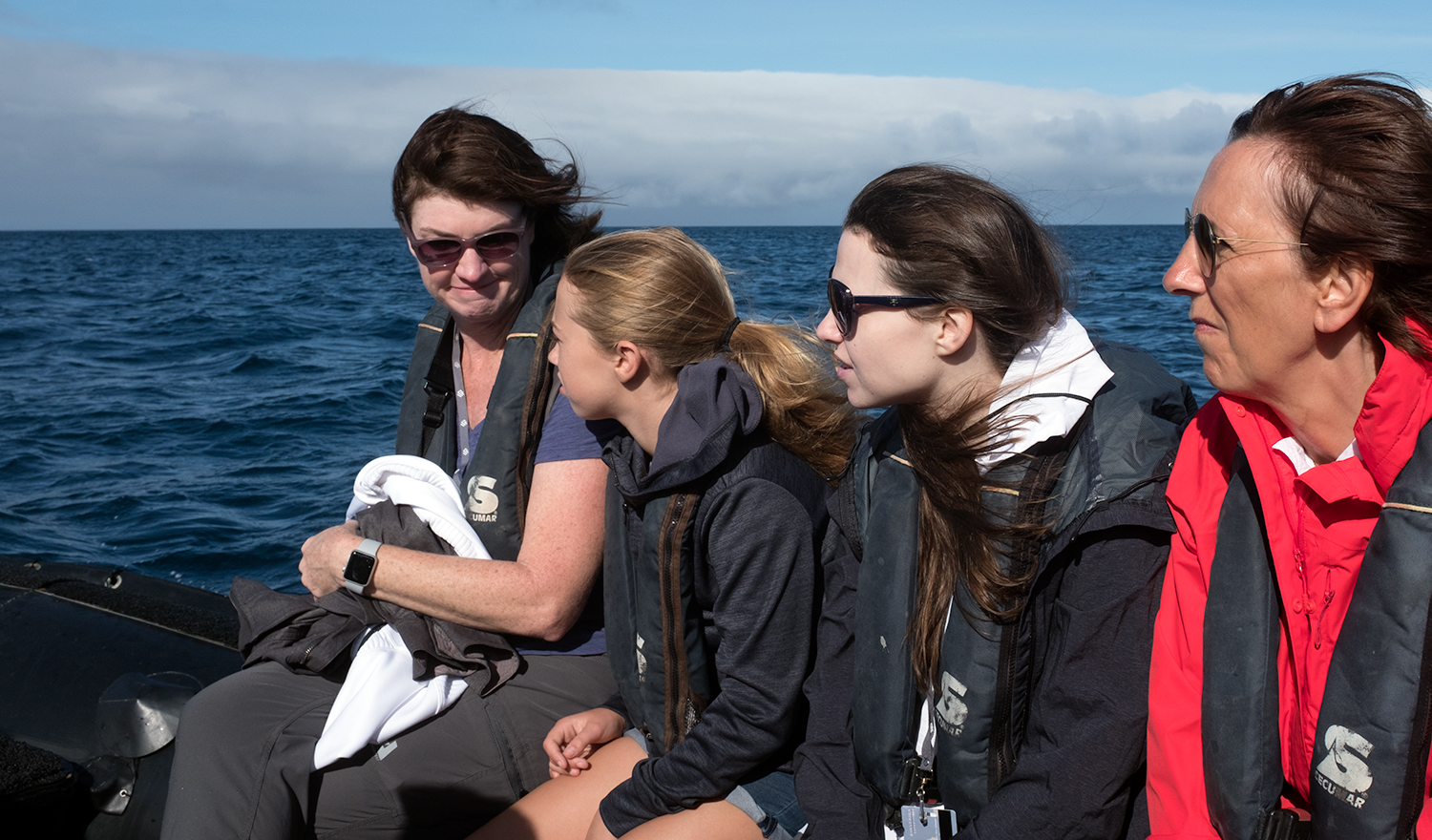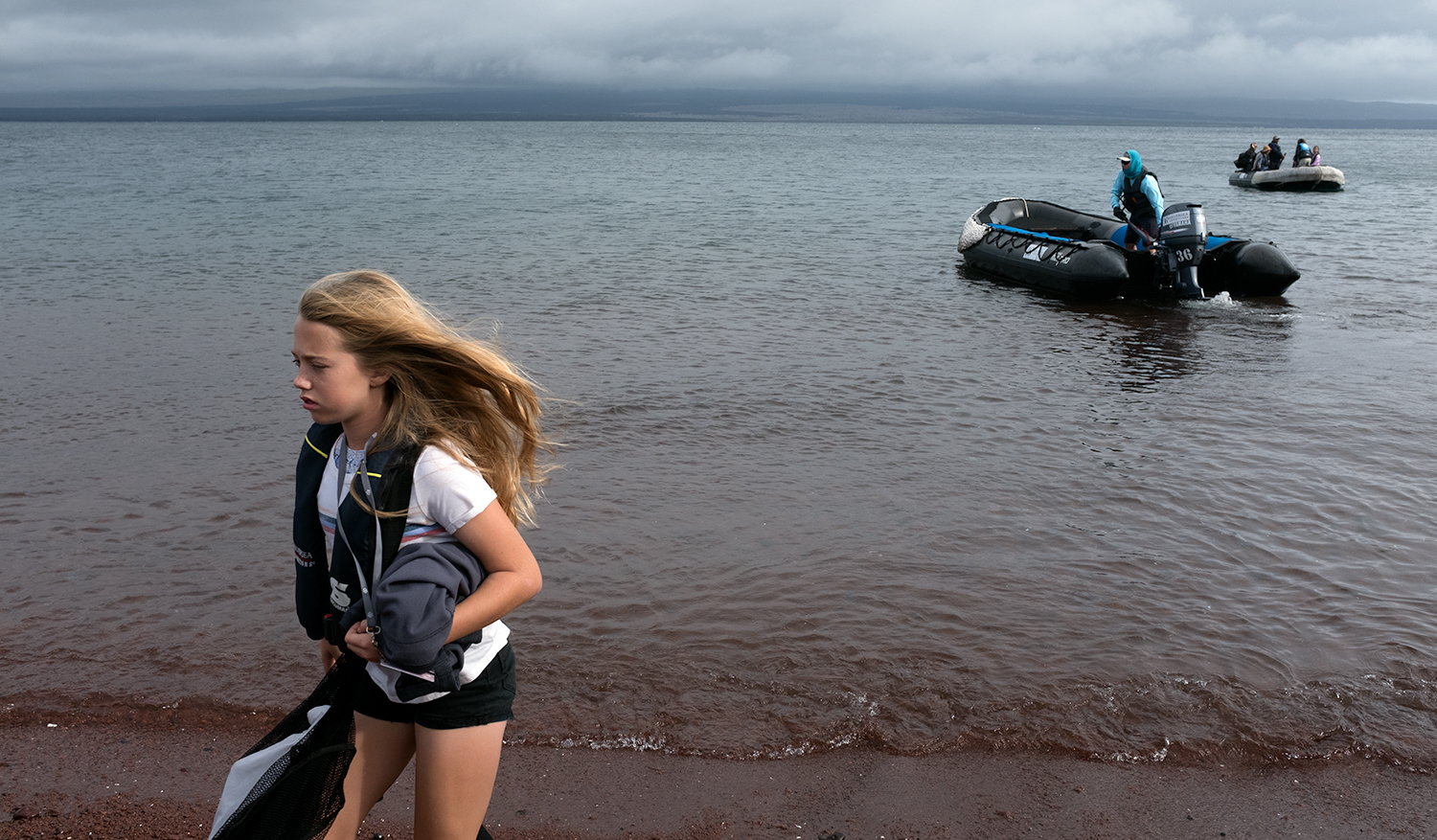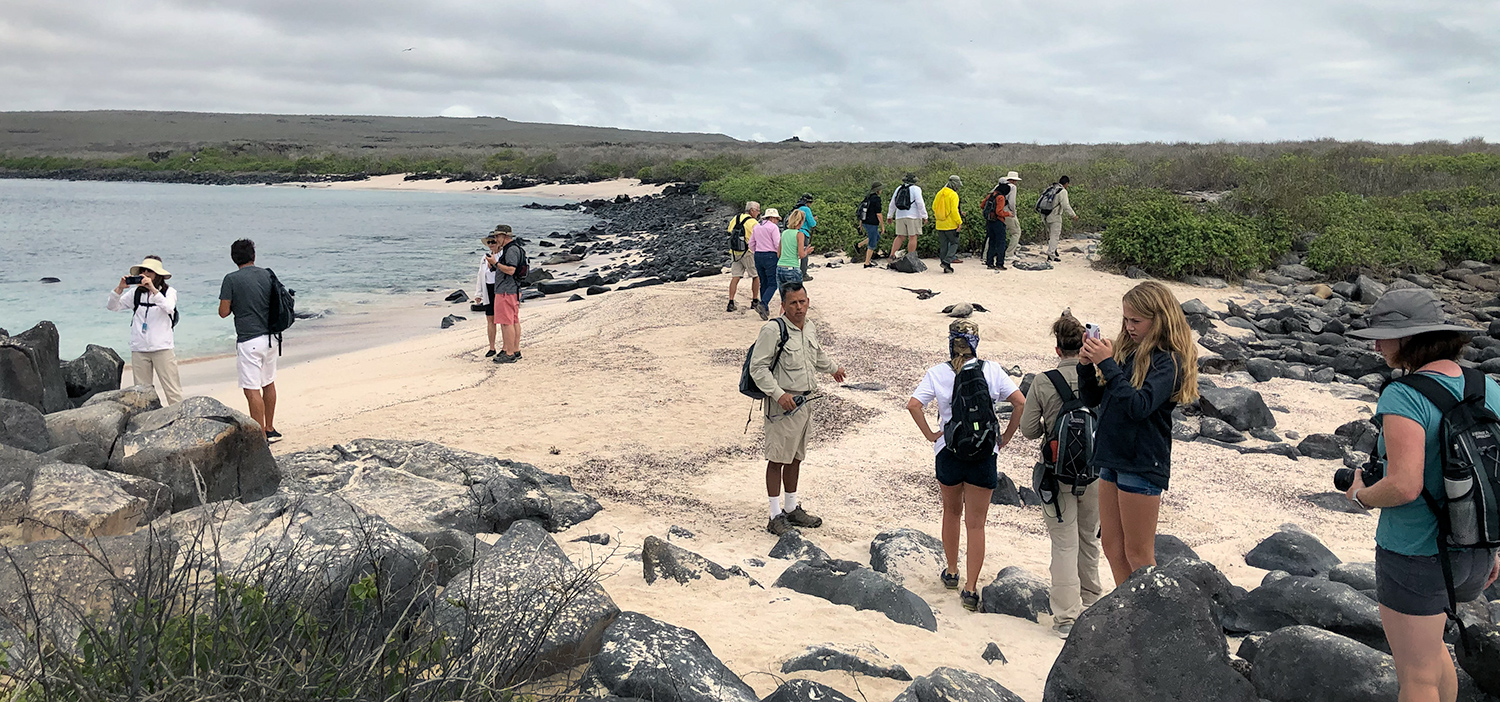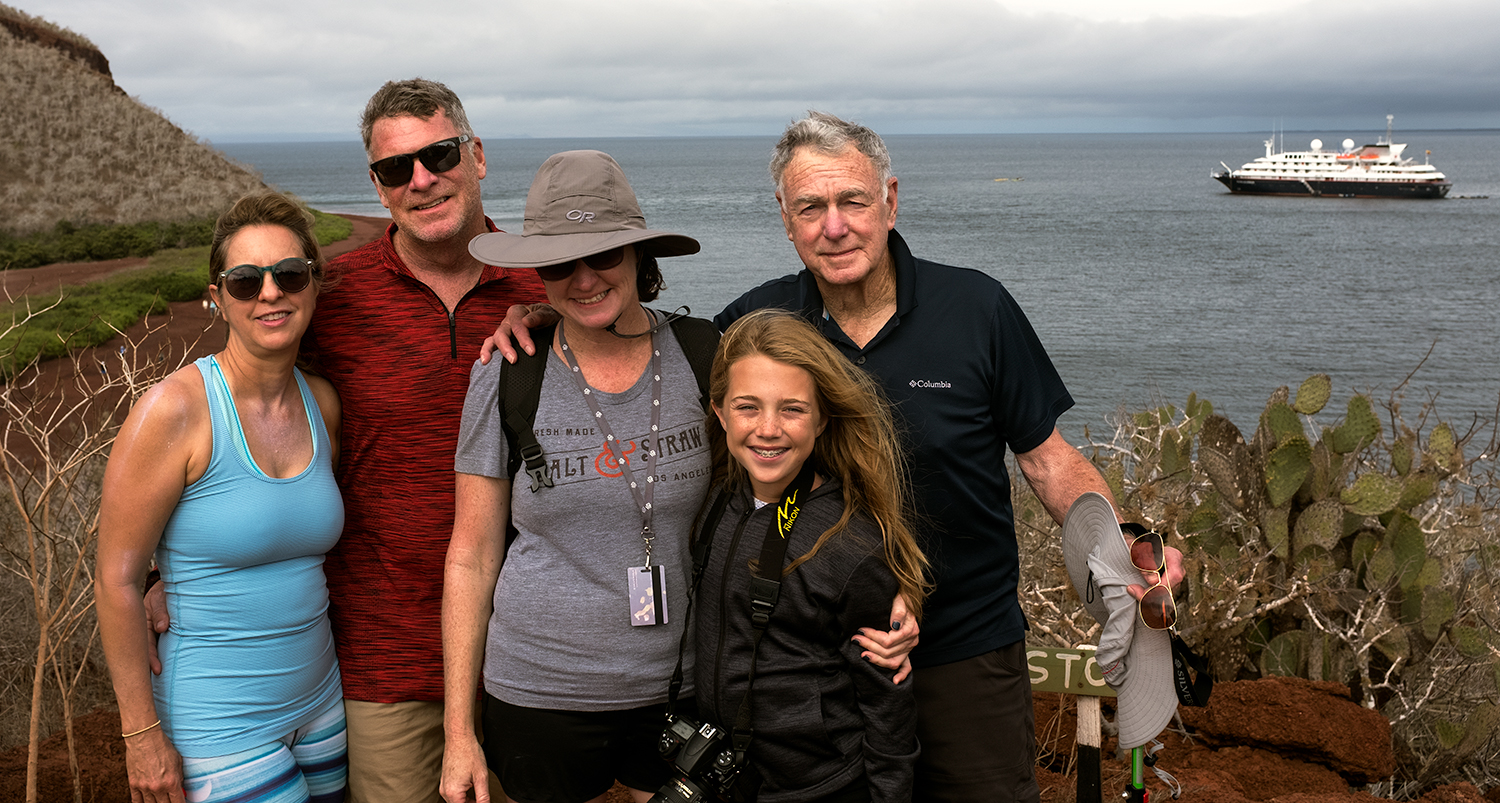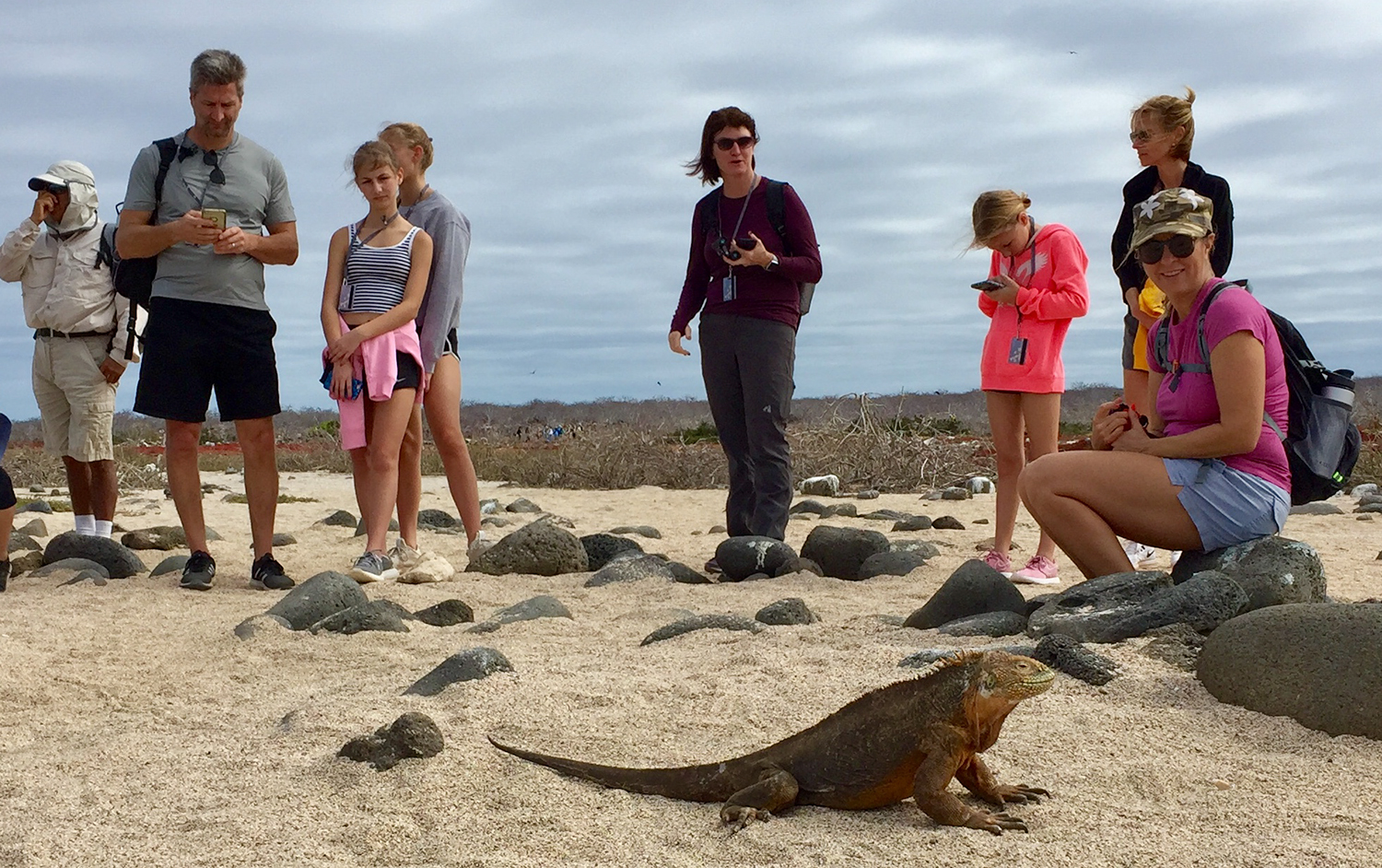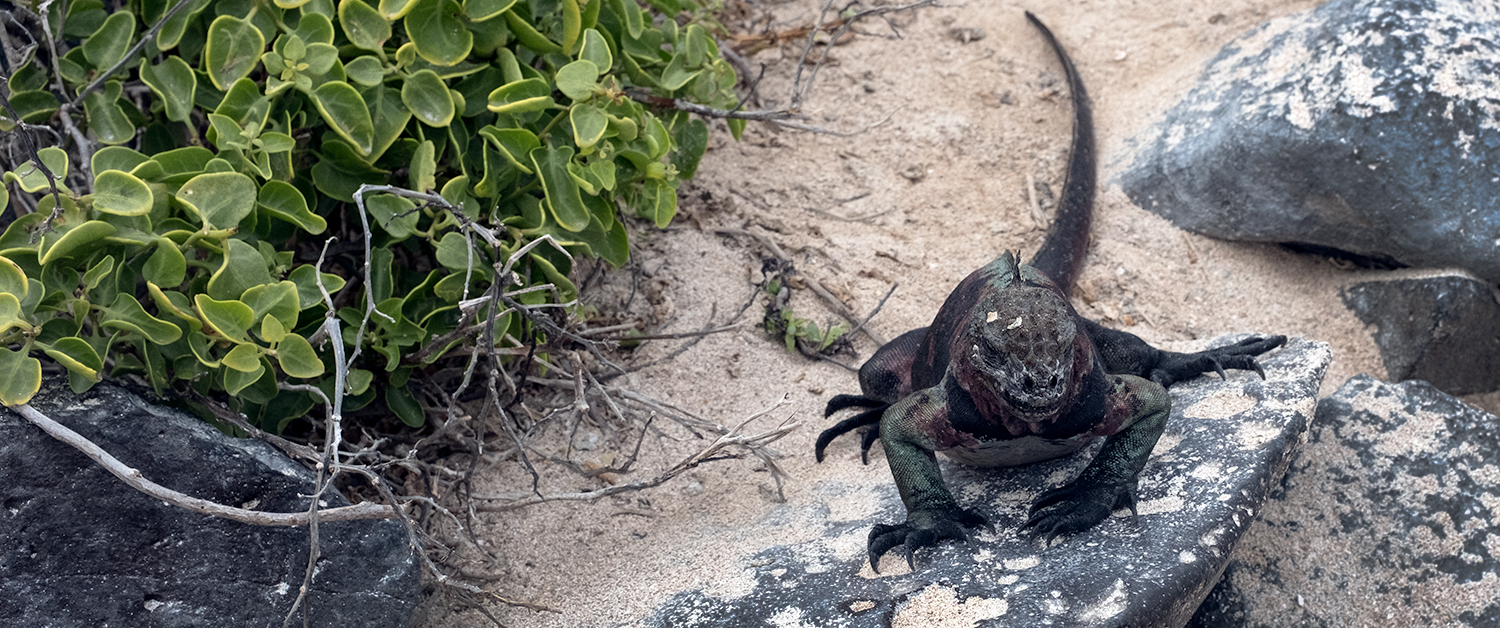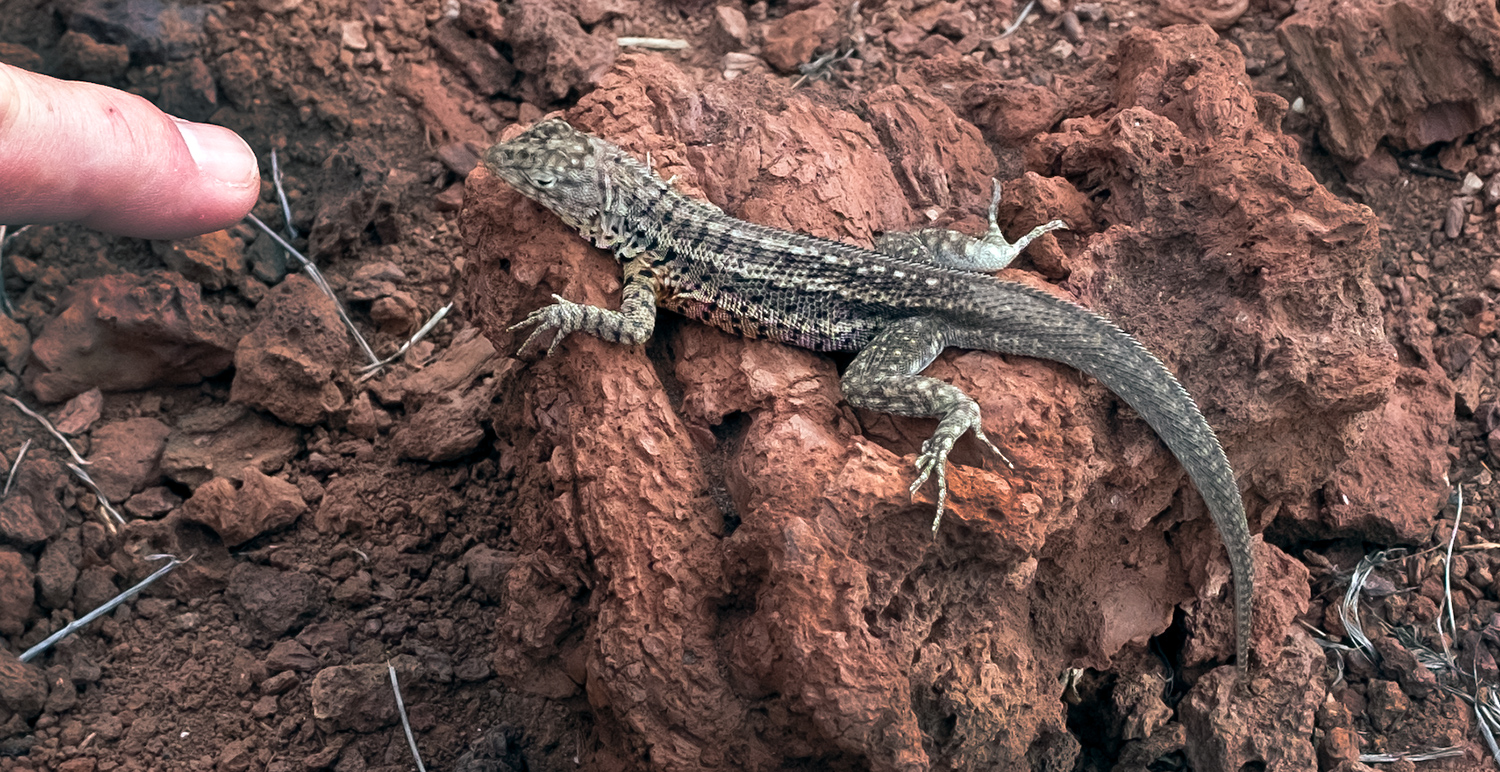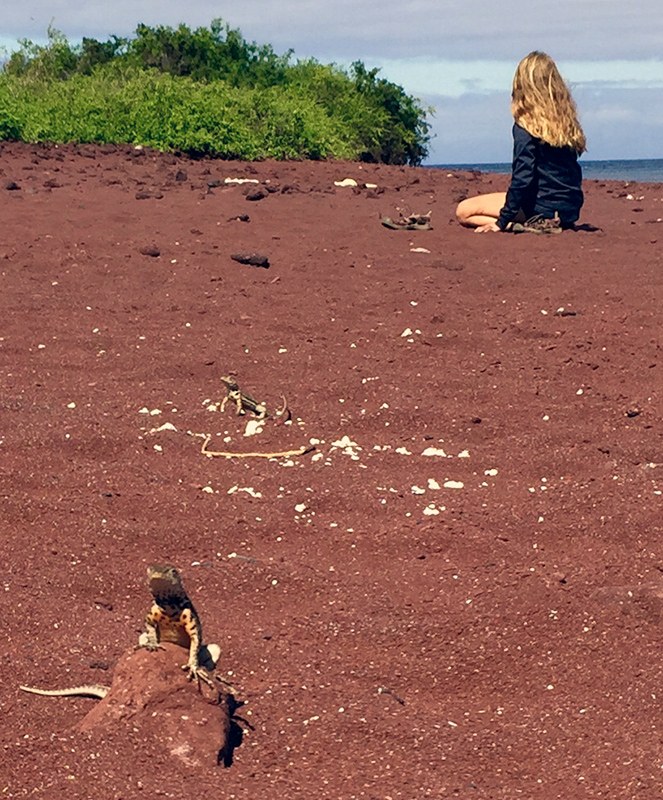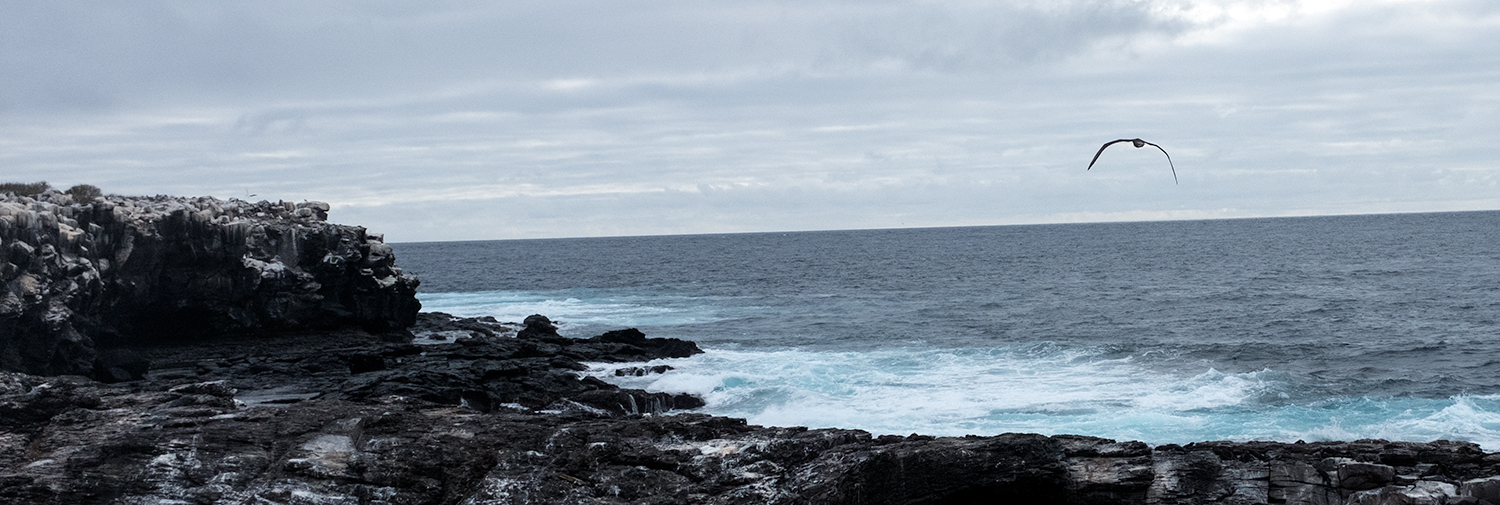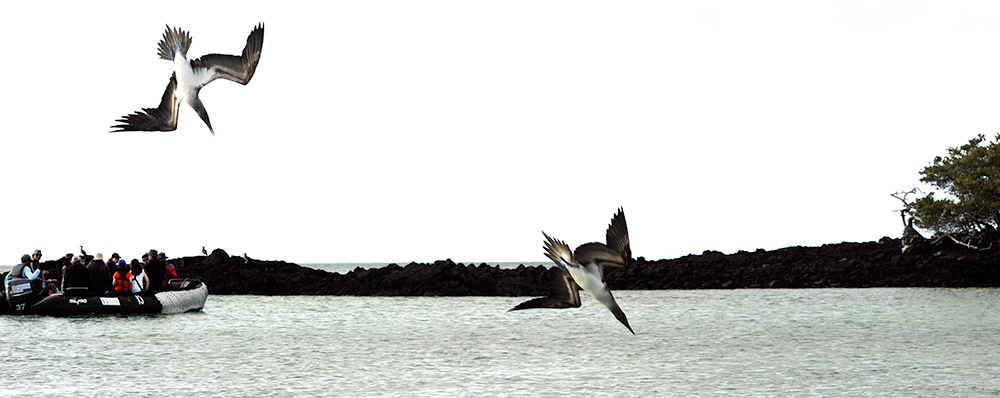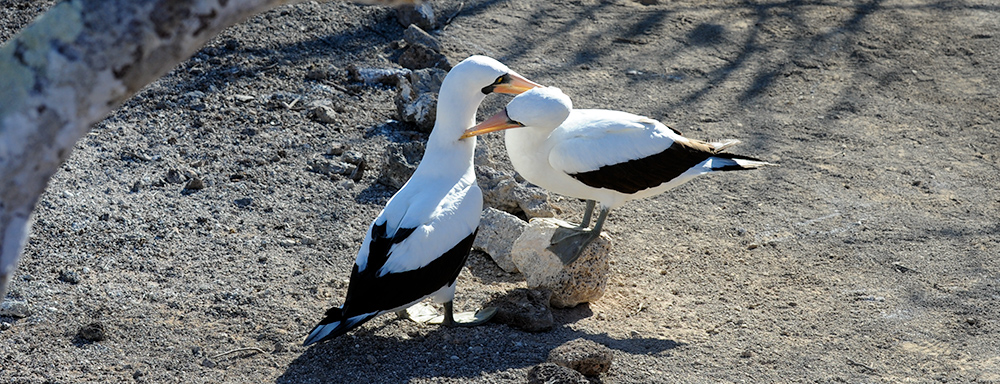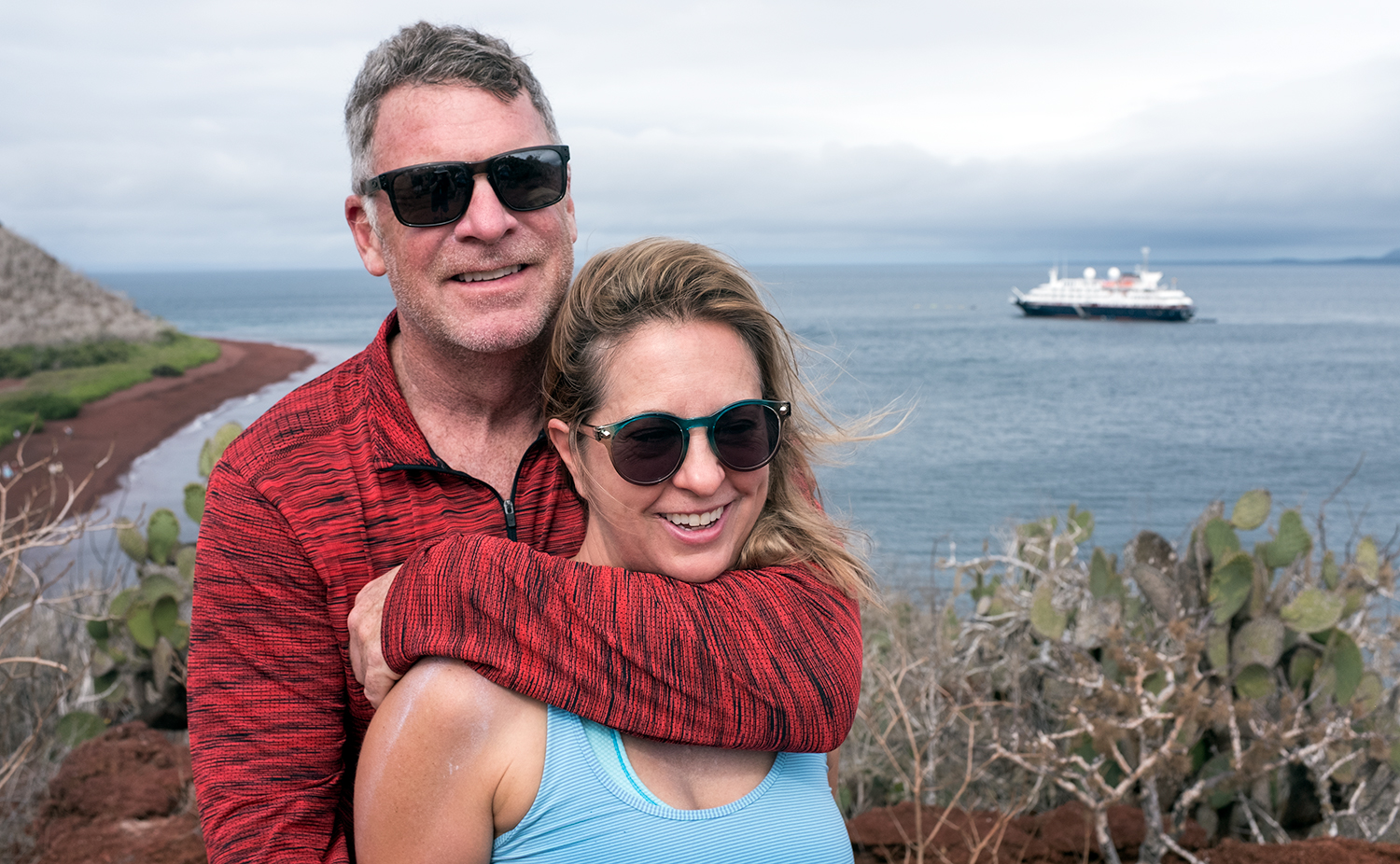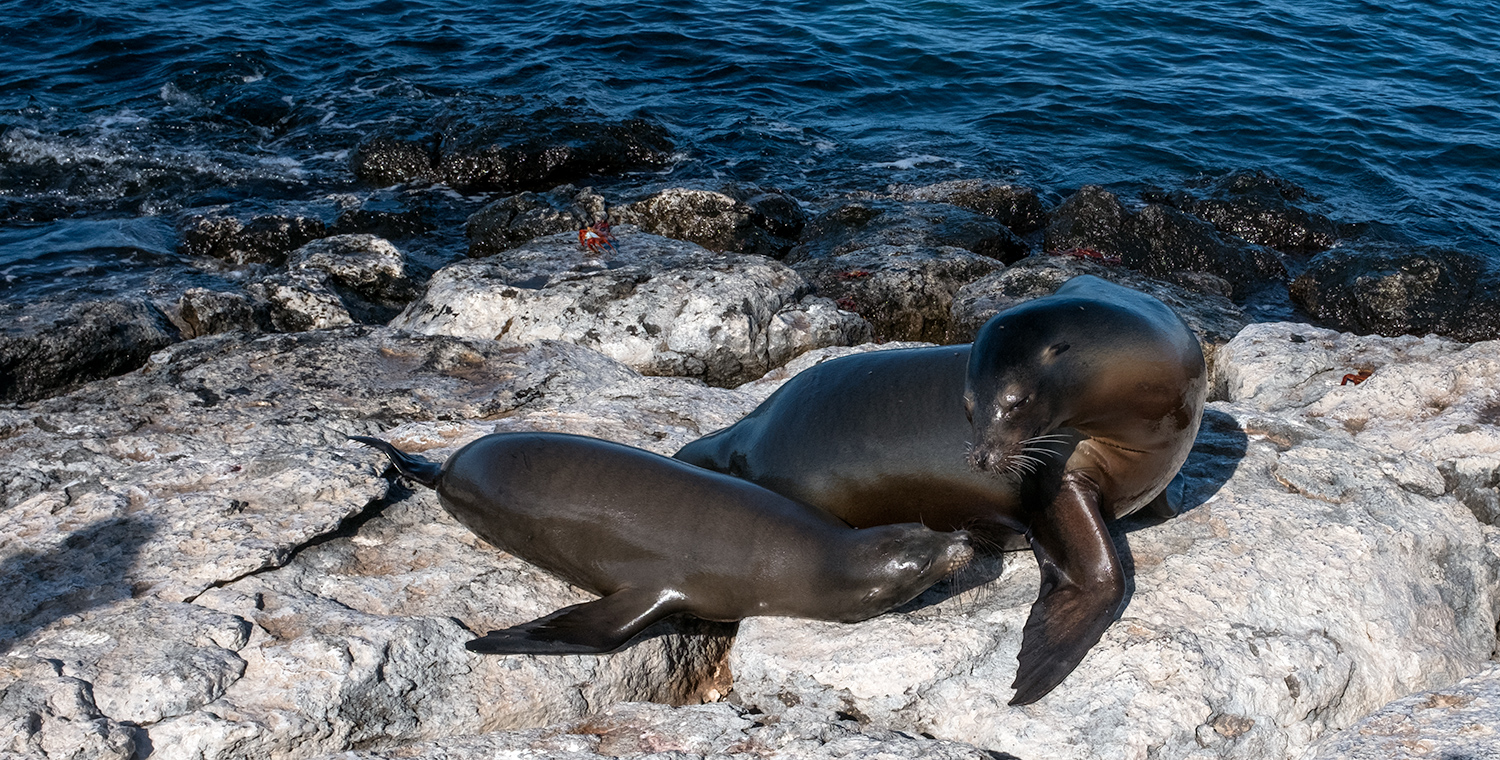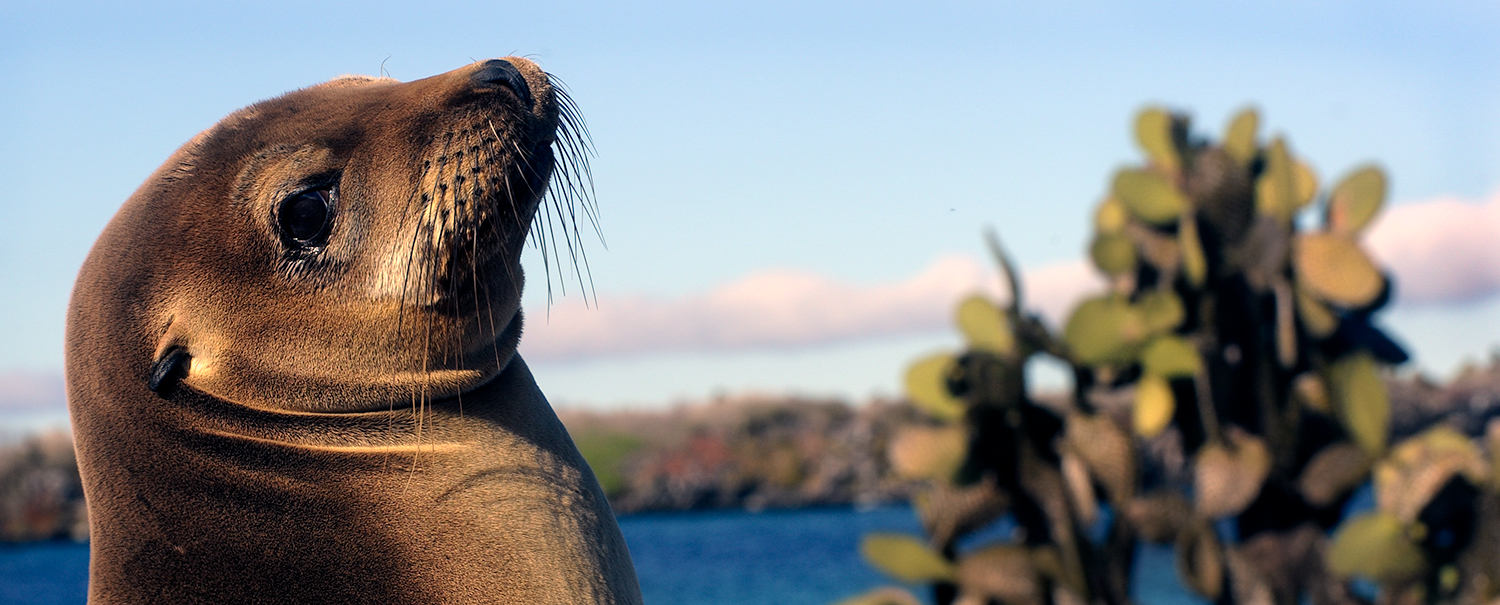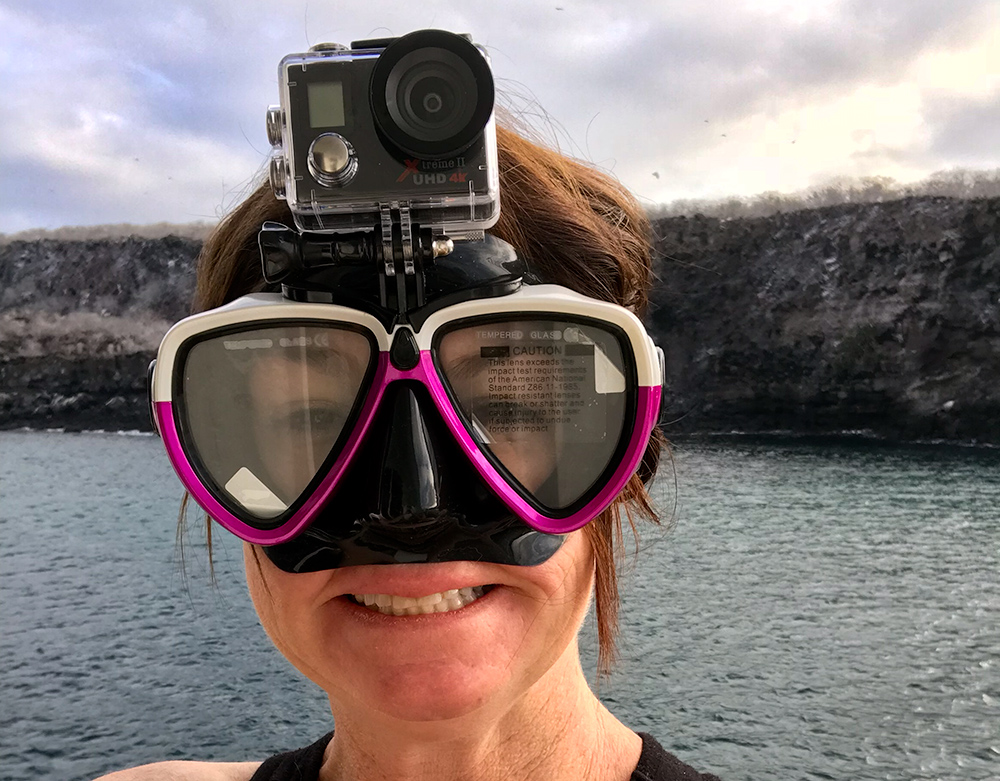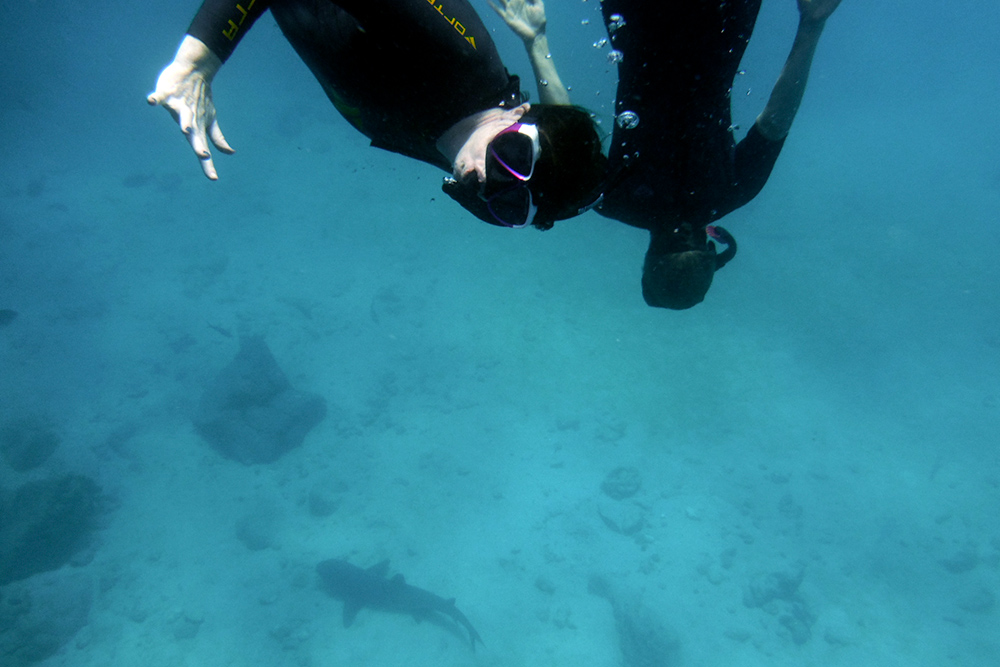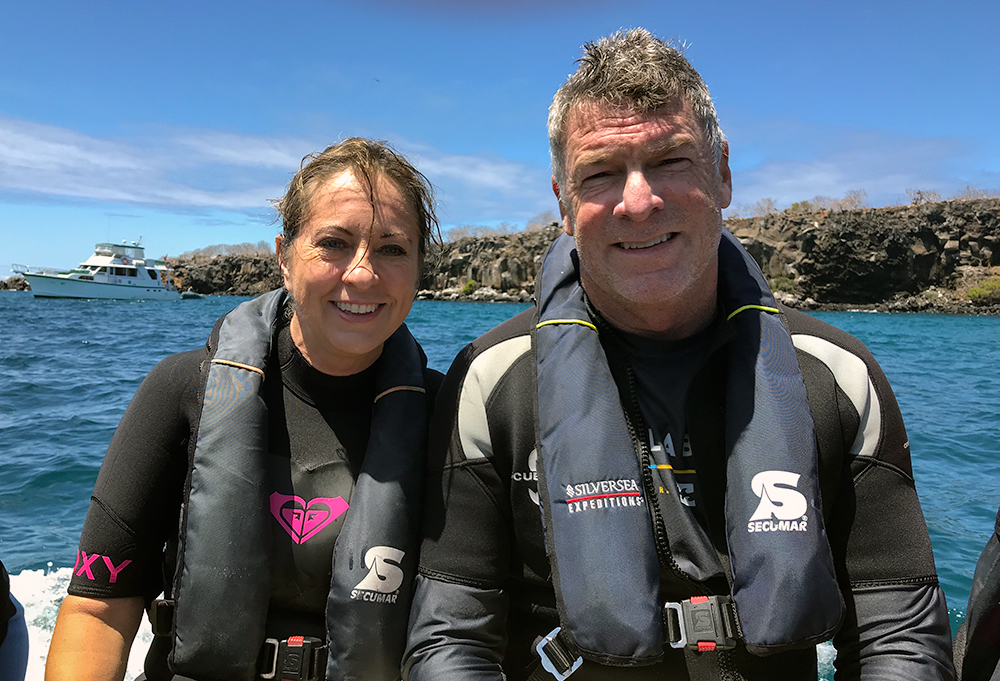The Galapagos Islands are a bucket-list destination for good reason: Thanks to a lack of natural predators, friendly wildlife such as playful sea lions and gigantic sea tortoises let visitors get up close and personal. This archipelago of about 19 islands and many smaller islets sprinkled 620 miles off Ecuador’s coast in the Pacific Ocean is a double World Heritage site (both land and sea are protected) and served as the inspiration for Charles Darwin’s Theory of Evolution. Each island boasts its own unique landscape, ranging from barren black, volcanic rocks to swaths of white sand beaches melting into gemstone-blue waters.” (Travel Channel)
Other than at two small ports, there are no landing facilities in the Galapagos. Transportation to and from the ship is by Zodiac and landings were described in the pre-departure briefing as “dry” or “wet.” For the former, the zodiac could get close enough to allow us to step out onto on a rock; for the latter, we just slipped over the side of the zodiac into the water and waded ashore, sorta like the D-Day invasion of France, but quieter.
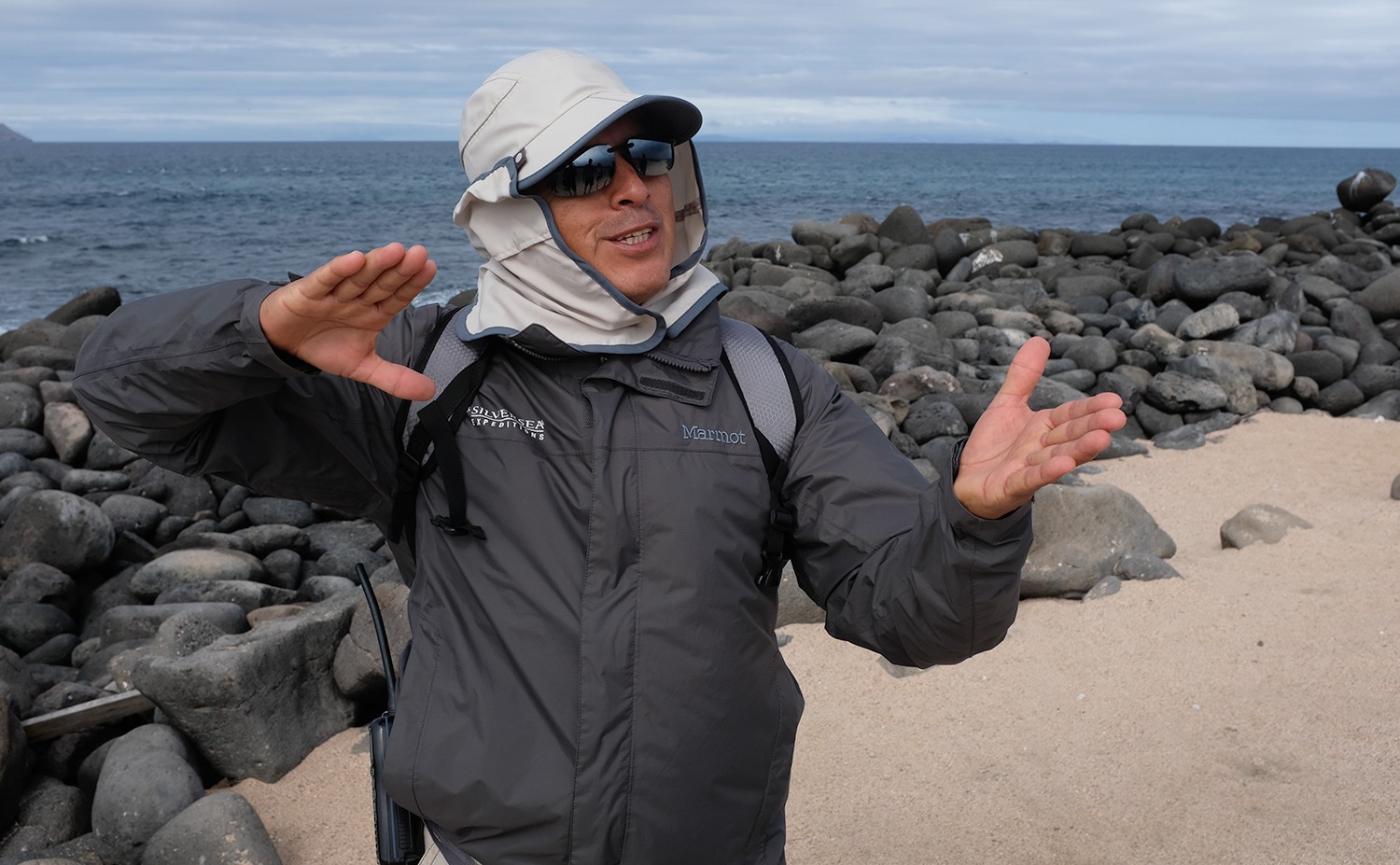
All shore excursions were led by a knowledgeable local Naturalist Guide. Above Martin Loyola discourses on birds.
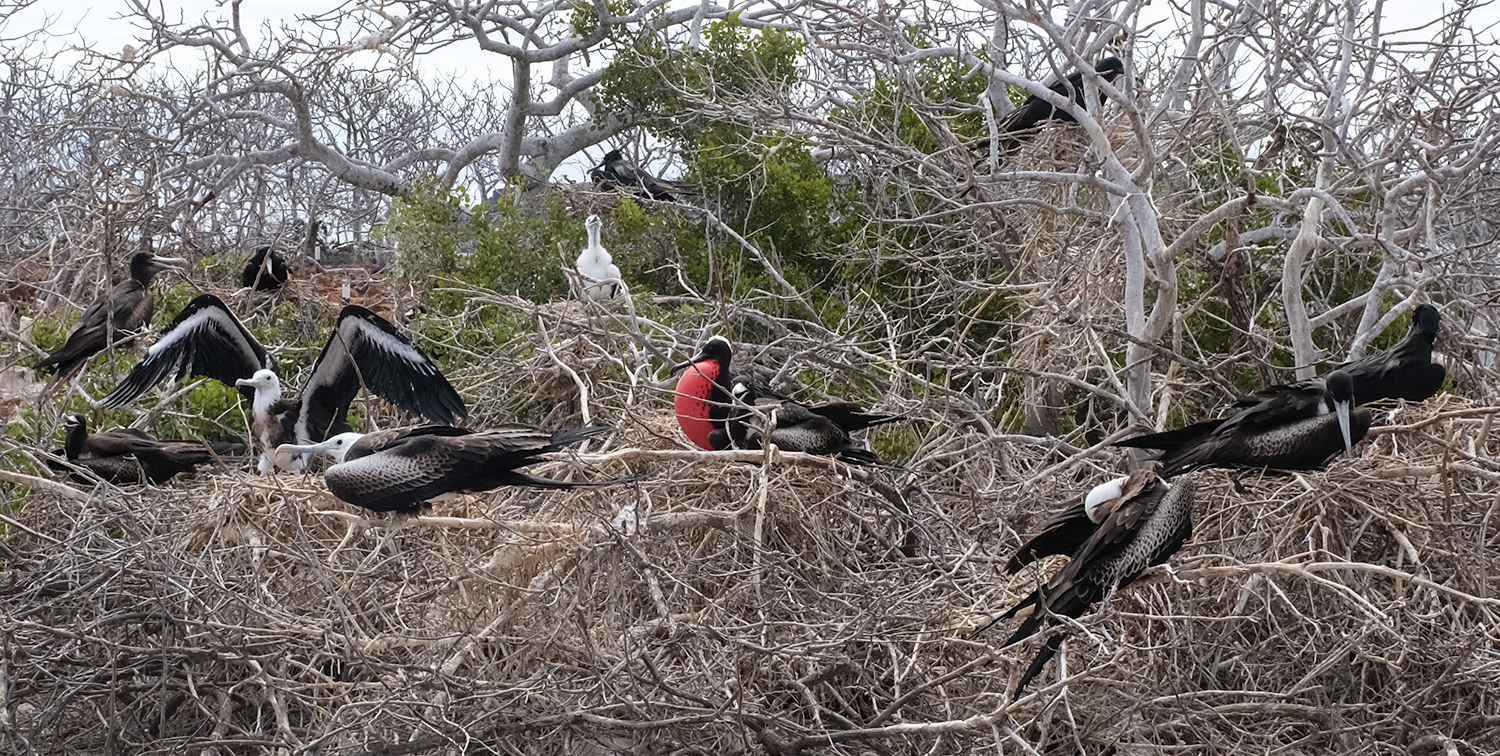
Nesting Frigate birds–These birds have the largest wingspan to body weight ratio of any bird in the world. The male Frigate has a large red throat pouch which is inflated during the breeding season. The Frigate is often referred to as a “pirate bird” due to its habit of stealing food from other birds.
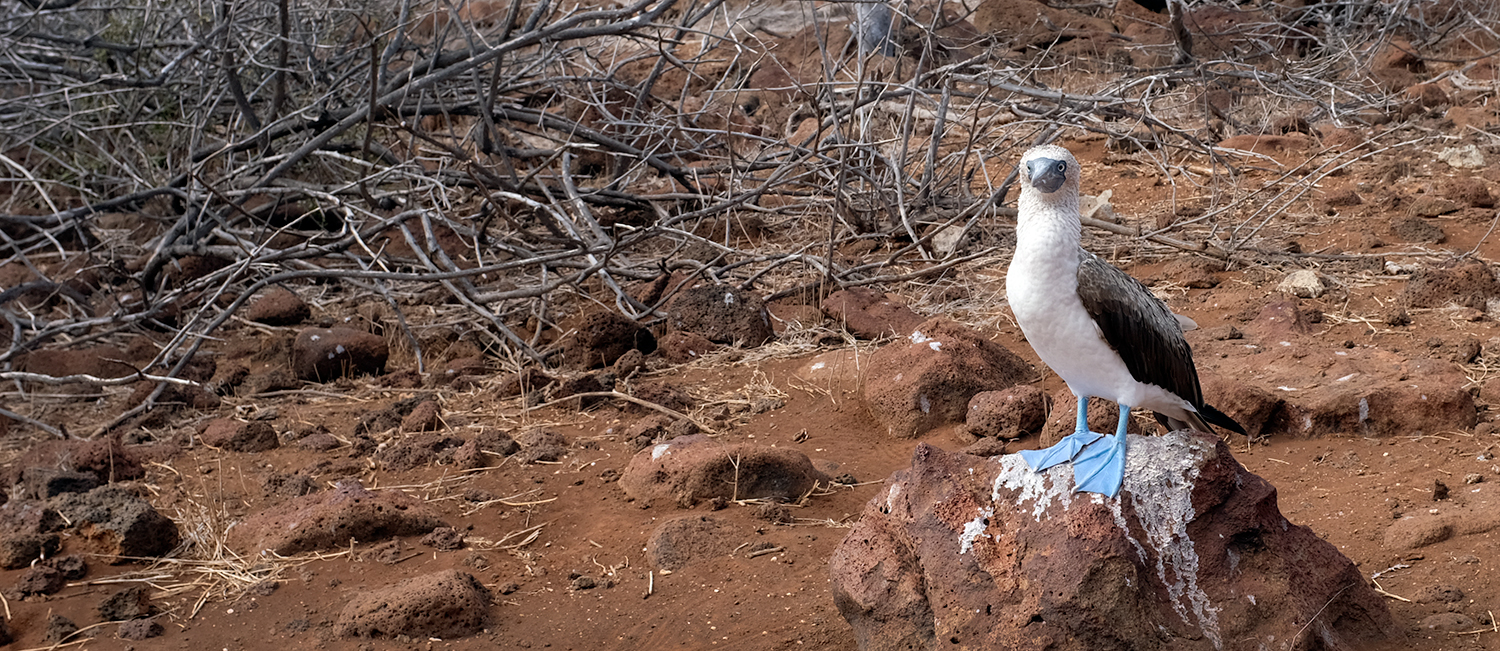
Blue-footed Booby–During mating rituals, male birds show off their feet to prospective mates with a high-stepping strut. The bluer the feet, the more attractive the mate. The Galápagos Islands population includes about half of all breeding pairs of blue-footed boobies.
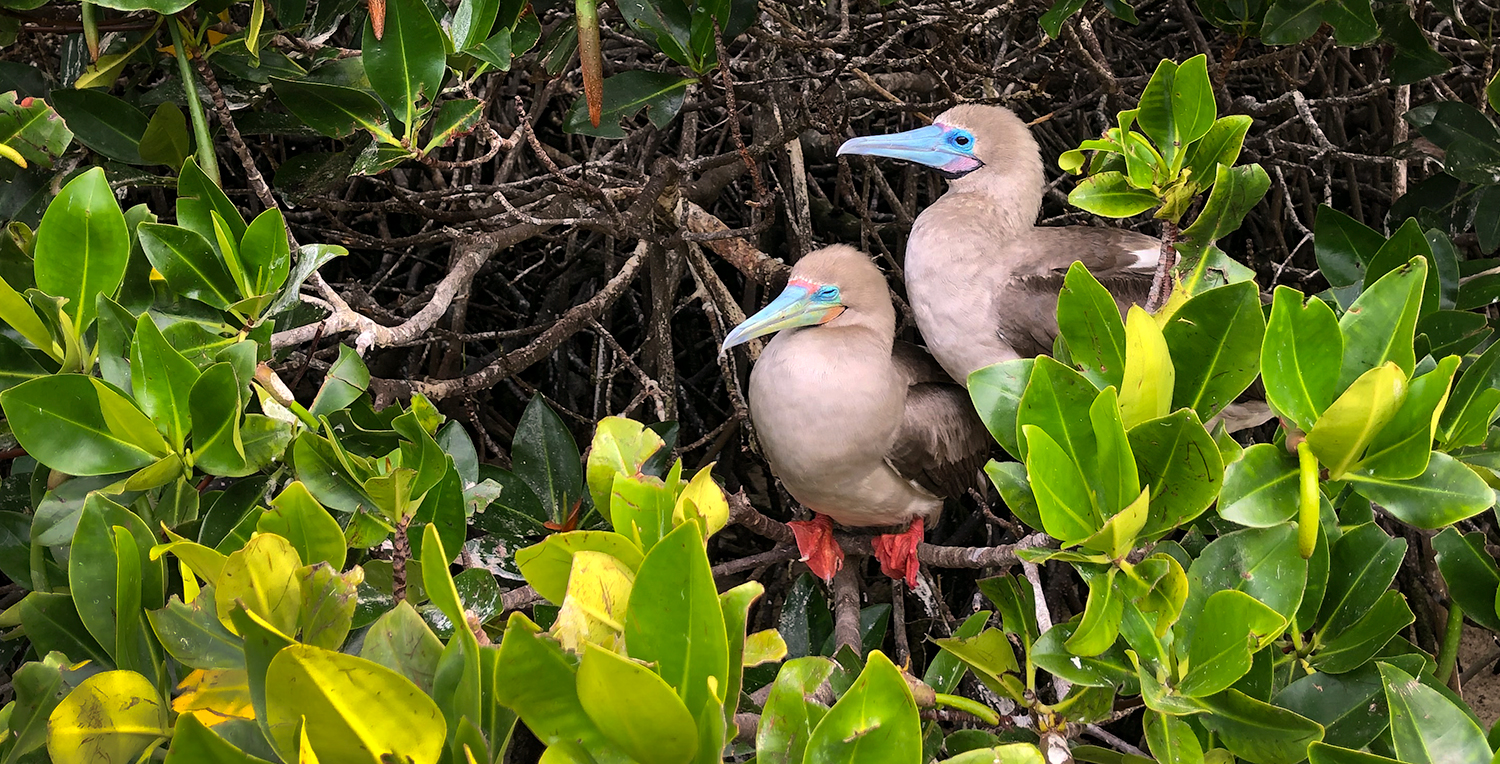
Red-footed Booby–These are the smallest of more than half a dozen booby species. The Red-footed Booby does not migrate, nesting on land, perching in coastal trees and shrubs. They feed at sea and are strong flyers and travel up to 93 miles in search of food. (NatGeo)
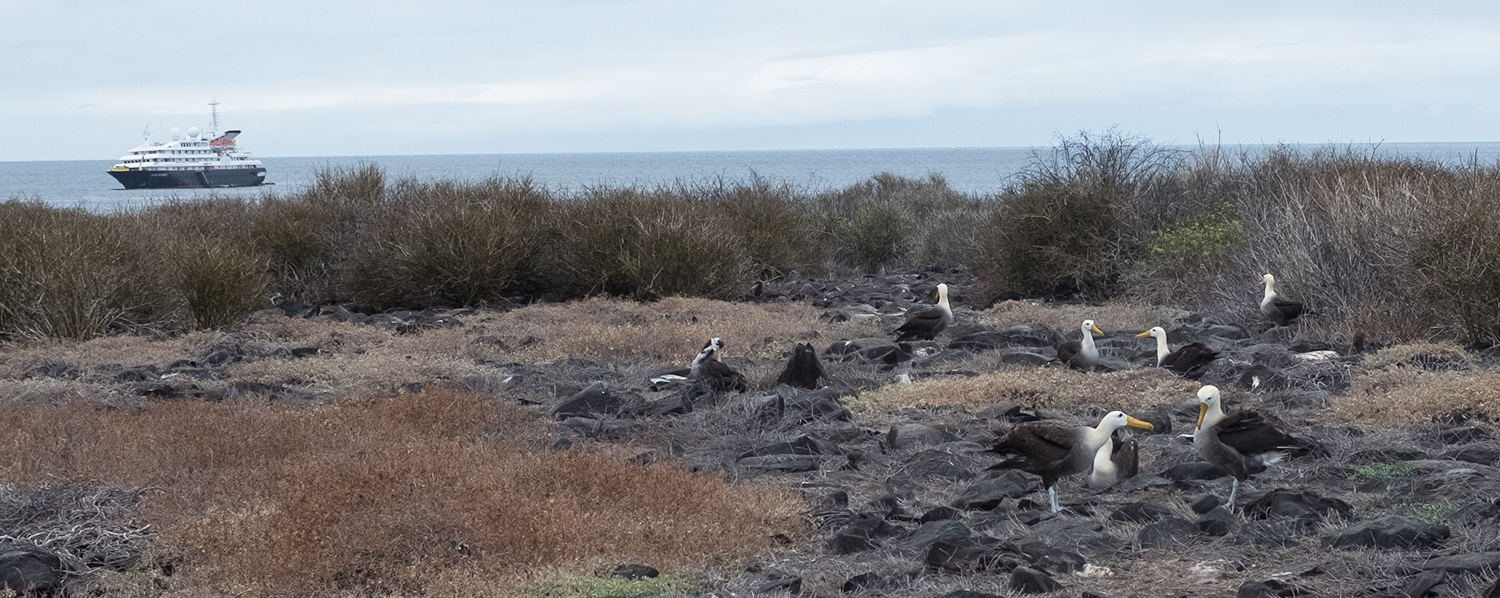
The waved albatross, also known as Galapagos albatross, have a wingspan of 7 – 8 feet and weigh 7 – 11 pounds.. When they forage at sea, they follow a straight path to a single site off the coast of Peru, about 1,000 km to the east. (Wikipedia)
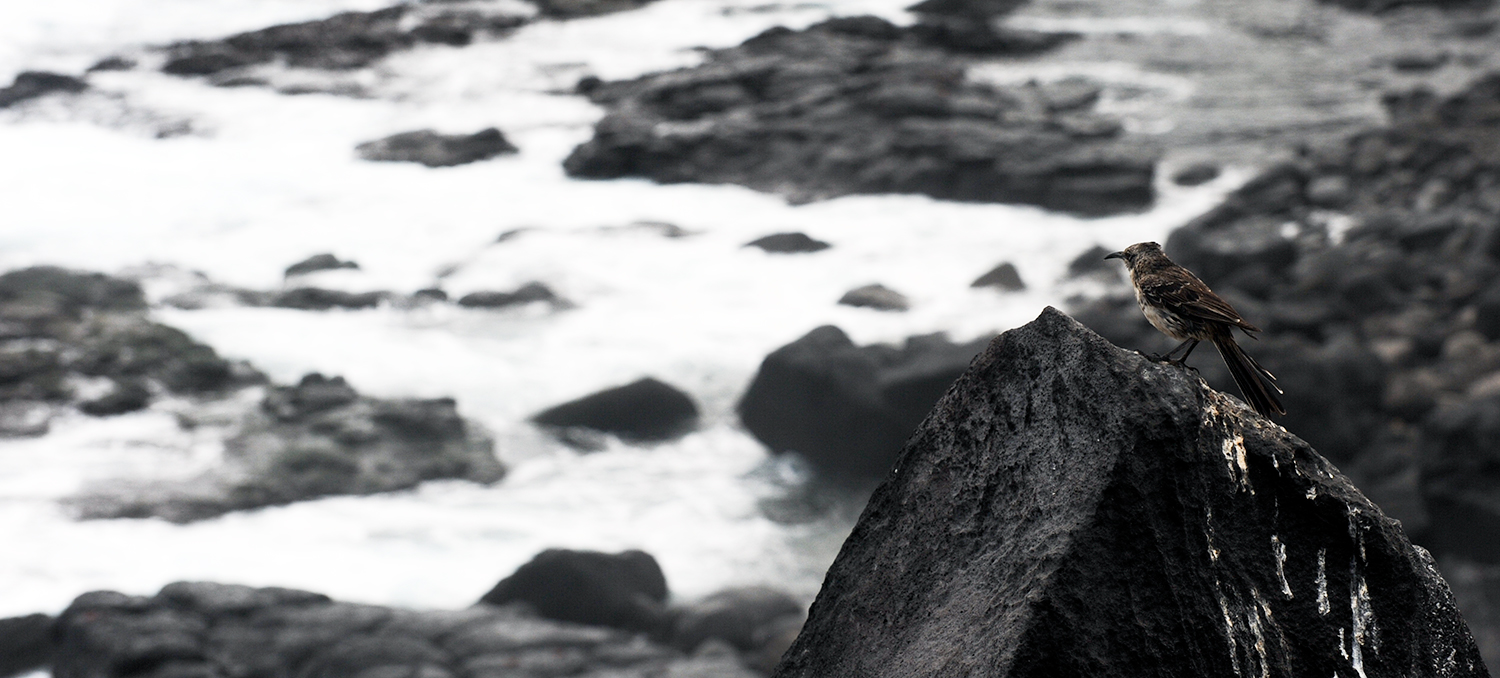
Here, I think, is one of the little birds that set Charles Darwin to thinking, and whose conclusions about evolution would make Darwin and the Galapagos Islands famous. “Seeing this gradation and diversity of structure in one small, intimately related group of birds, one might really fancy that from an original paucity of birds in this archipelago, one species had been taken and modified for different ends.” (Charles Darwin in the Voyage of the Beagle)
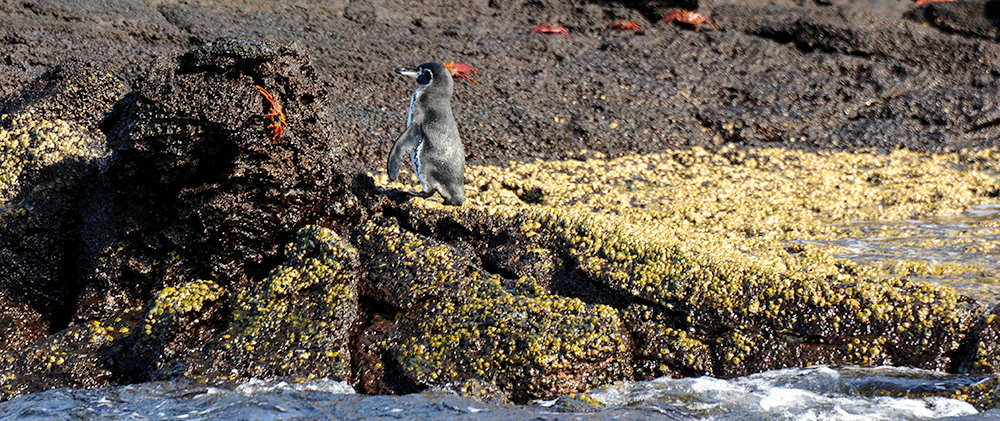 Surprise: Penguins on the Equator.
Surprise: Penguins on the Equator.
“The Galápagos penguin is a penguin endemic to the Galápagos Islands. It is the only penguin found north of the equator. It survives in this habitat due to the cool temperatures resulting from the Humboldt Current and cool waters from great depths brought up by the Cromwell Current.” (Wikipedia)
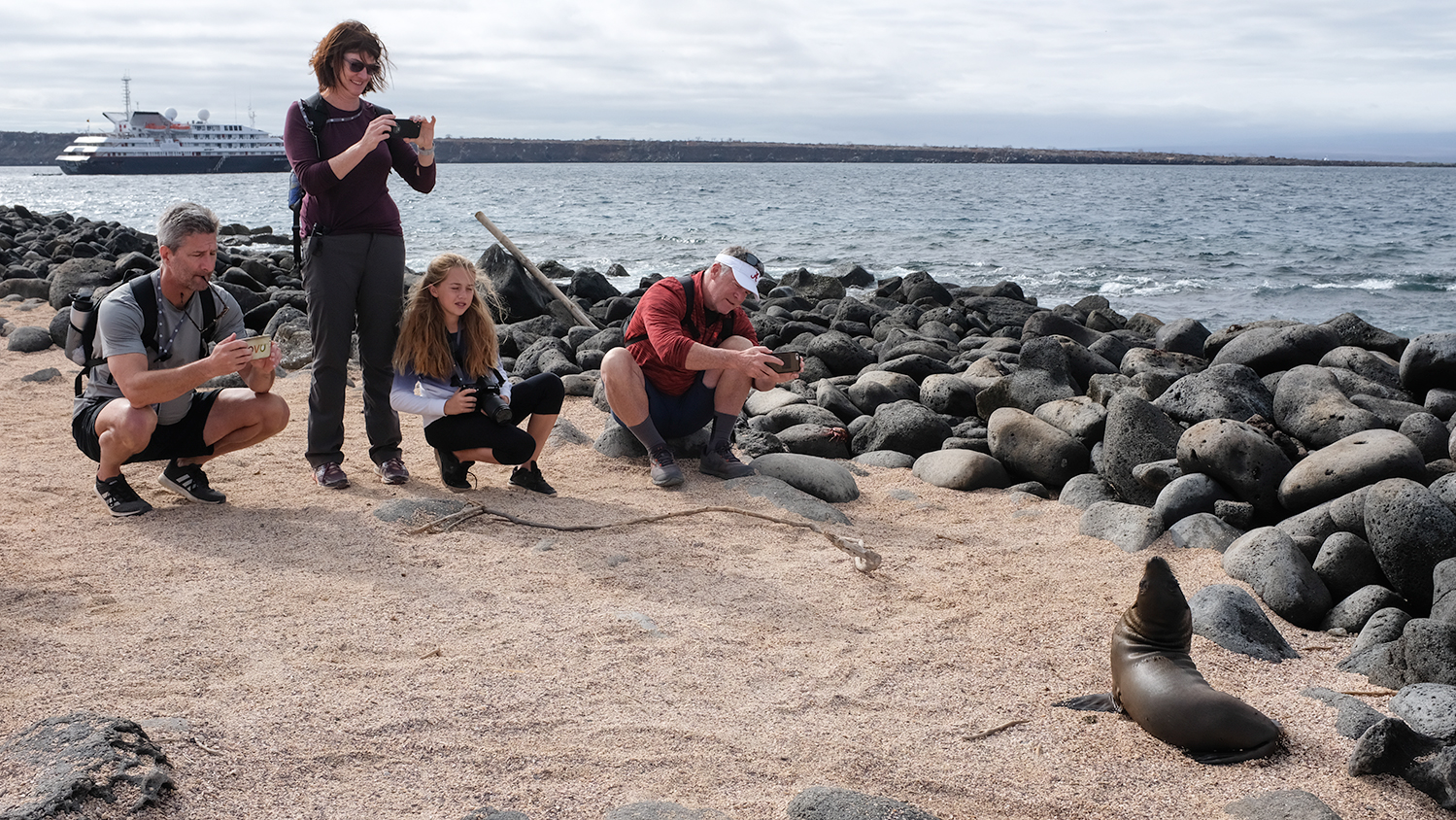
The Galapagos Island are home to both Fur Seals and Sea Lions. The two are difficult to tell apart, but Sea Lions tend to be larger.
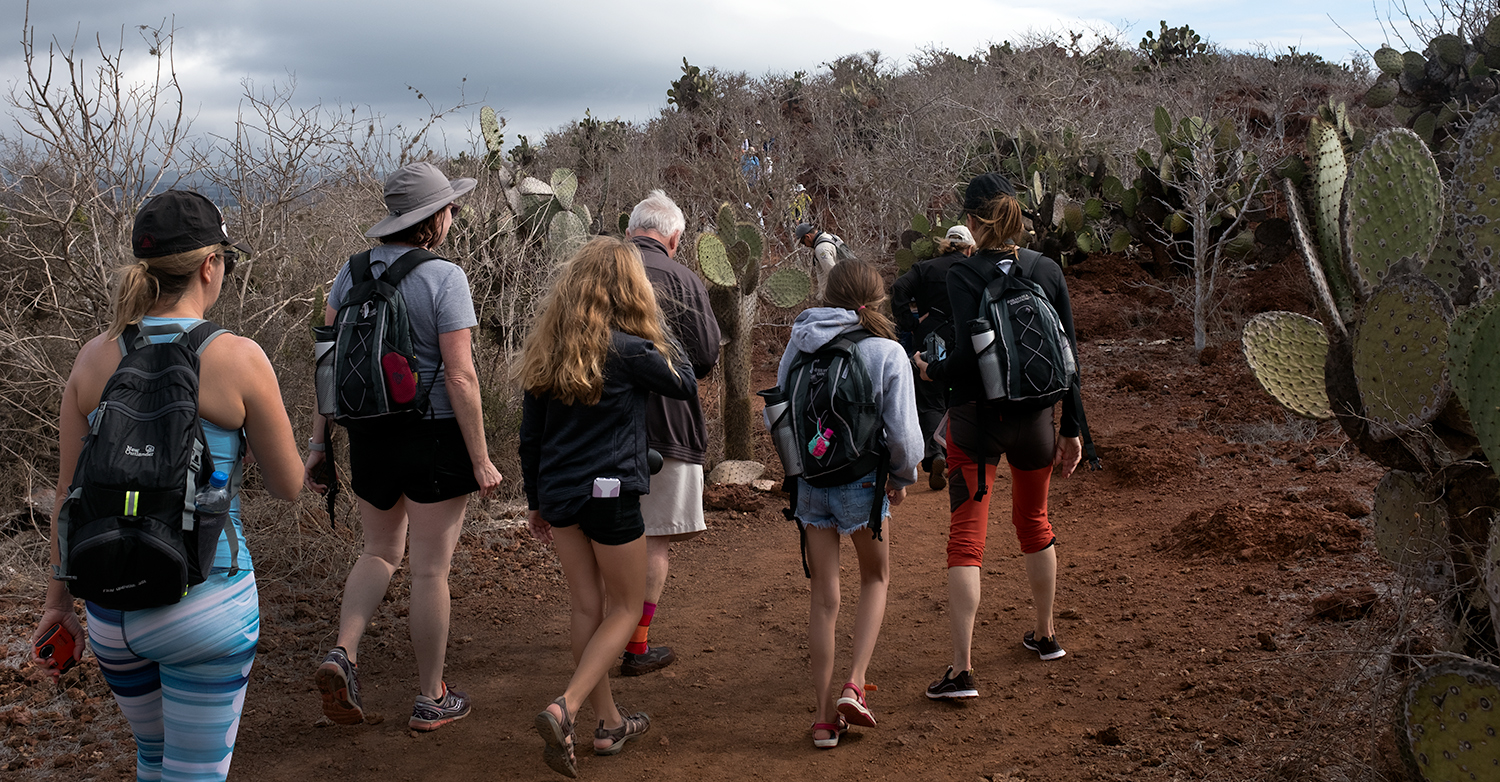 Charles Darwin and the HMS Beagle were in Galapagos during the months of September and October of 1835, and his first impression of the islands does not appear in tourist travel brochures:
Charles Darwin and the HMS Beagle were in Galapagos during the months of September and October of 1835, and his first impression of the islands does not appear in tourist travel brochures:
“Nothing could be less inviting than the first appearance. A broken field of black basaltic lava, thrown into the most rugged waves, and crossed by great fissures, is everwhere covered by stunted, sunburned brushwood, being heated by the noon-day sun, gave the air a close and sultry feeling, like that from a stove: we fancied even the bushes smelt unpleasantly” (Voyage of the Beagle: 377-378).
Our daily nature walks were usually conducted over broken ground along primitive pathways that frequently crossed over basaltic boulders. We had a choice each day of an easy walk of an hour or so, or the full Monty, a much more difficult trek of several hours across often rugged terrain.
We almost always opted for the the longer more challenging walks as they offered encounters with a greater variety of plants and wildlife, along with fine views from the heights. Often, as we trudged over the rocks, our nature guide would point to a bird, animal, or plant which he/she explained could be found nowhere else on the planet but here in the Galapagos Islands.
To say each day of the cruise was a new adventure is not an exaggeration.
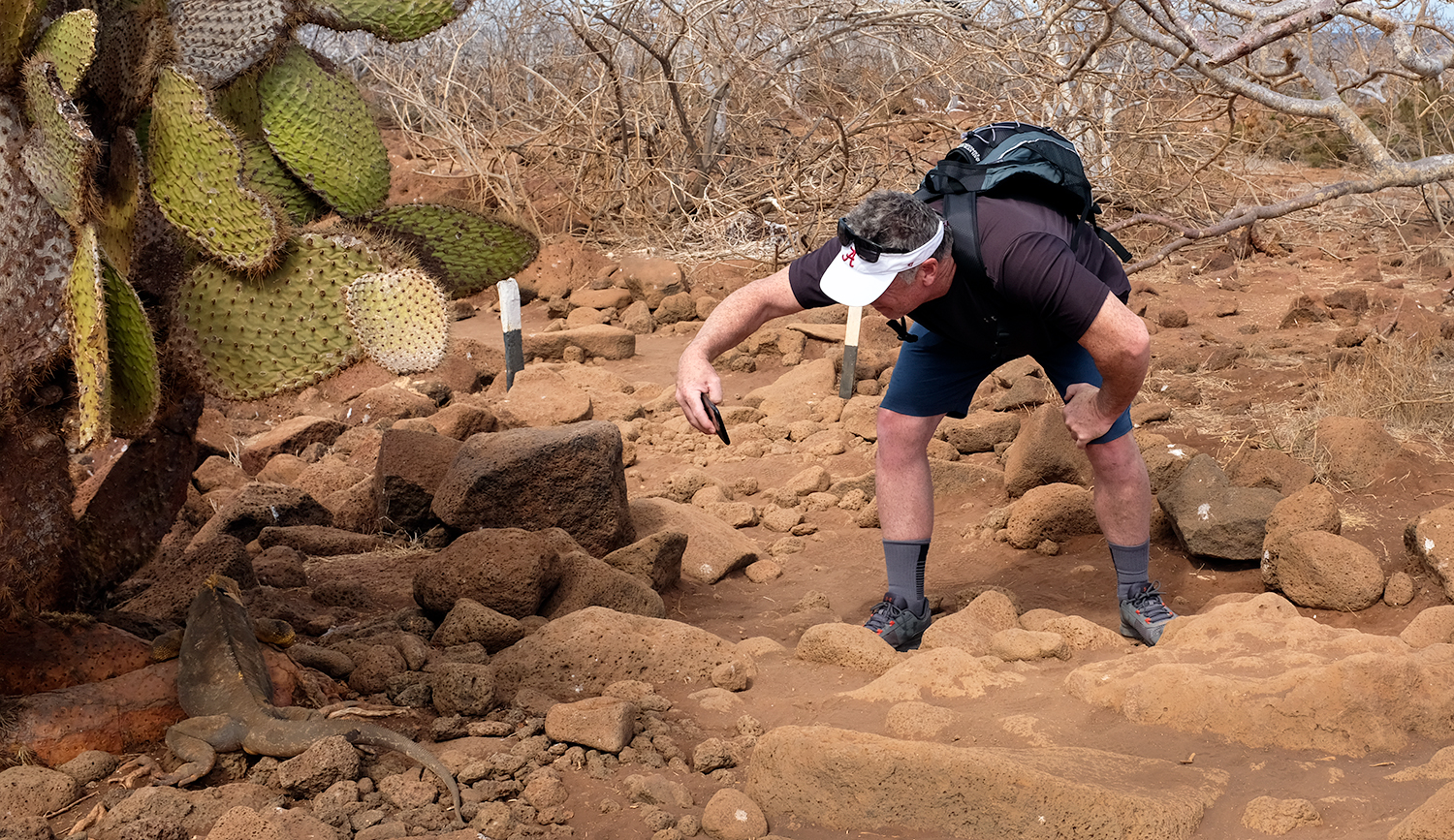 Key is standing on the “trail.”
Key is standing on the “trail.”
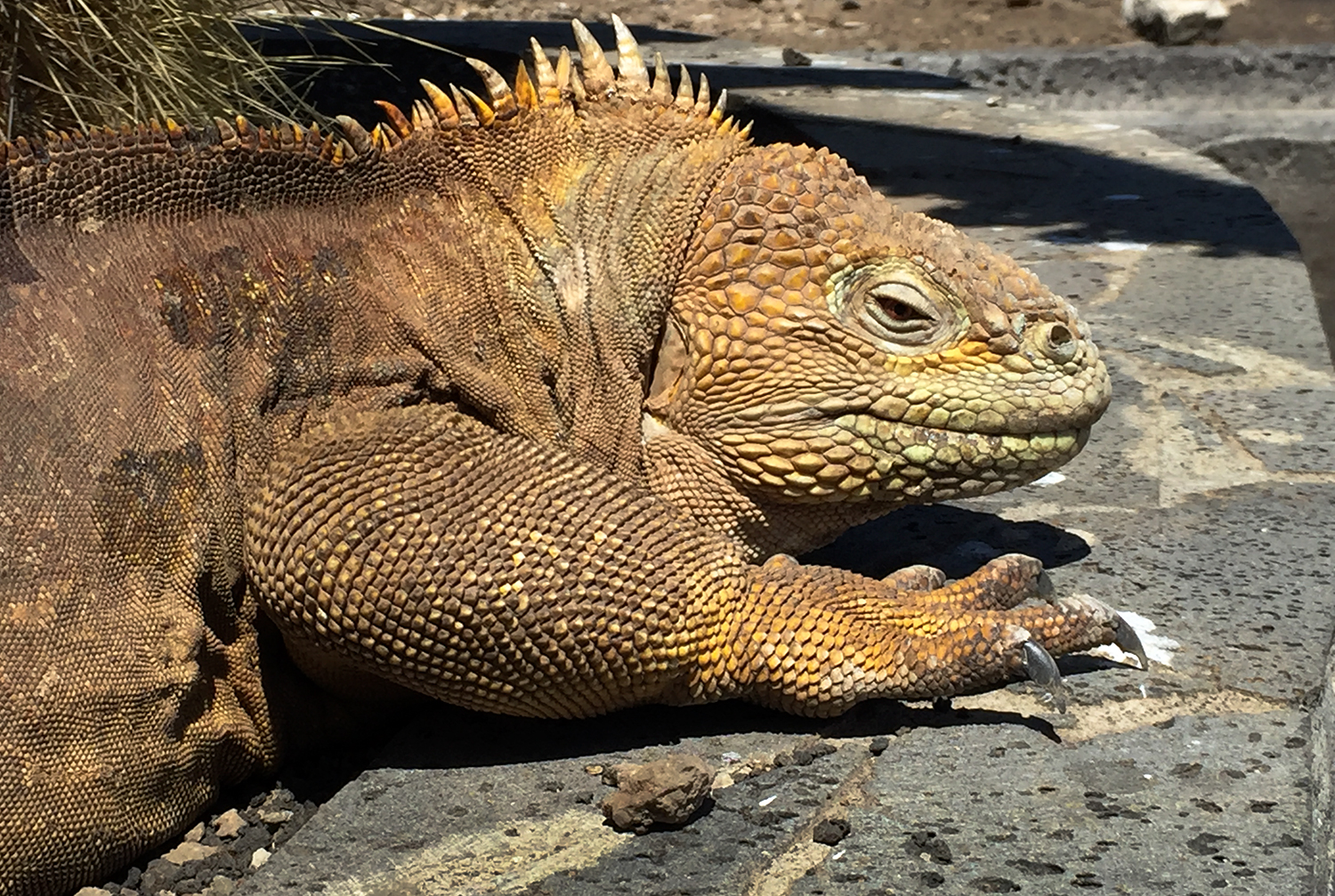 Land Iguana–A cold-blooded animal, these creatures gather in large numbers on the warm rocks to soak up the heat.
Land Iguana–A cold-blooded animal, these creatures gather in large numbers on the warm rocks to soak up the heat.
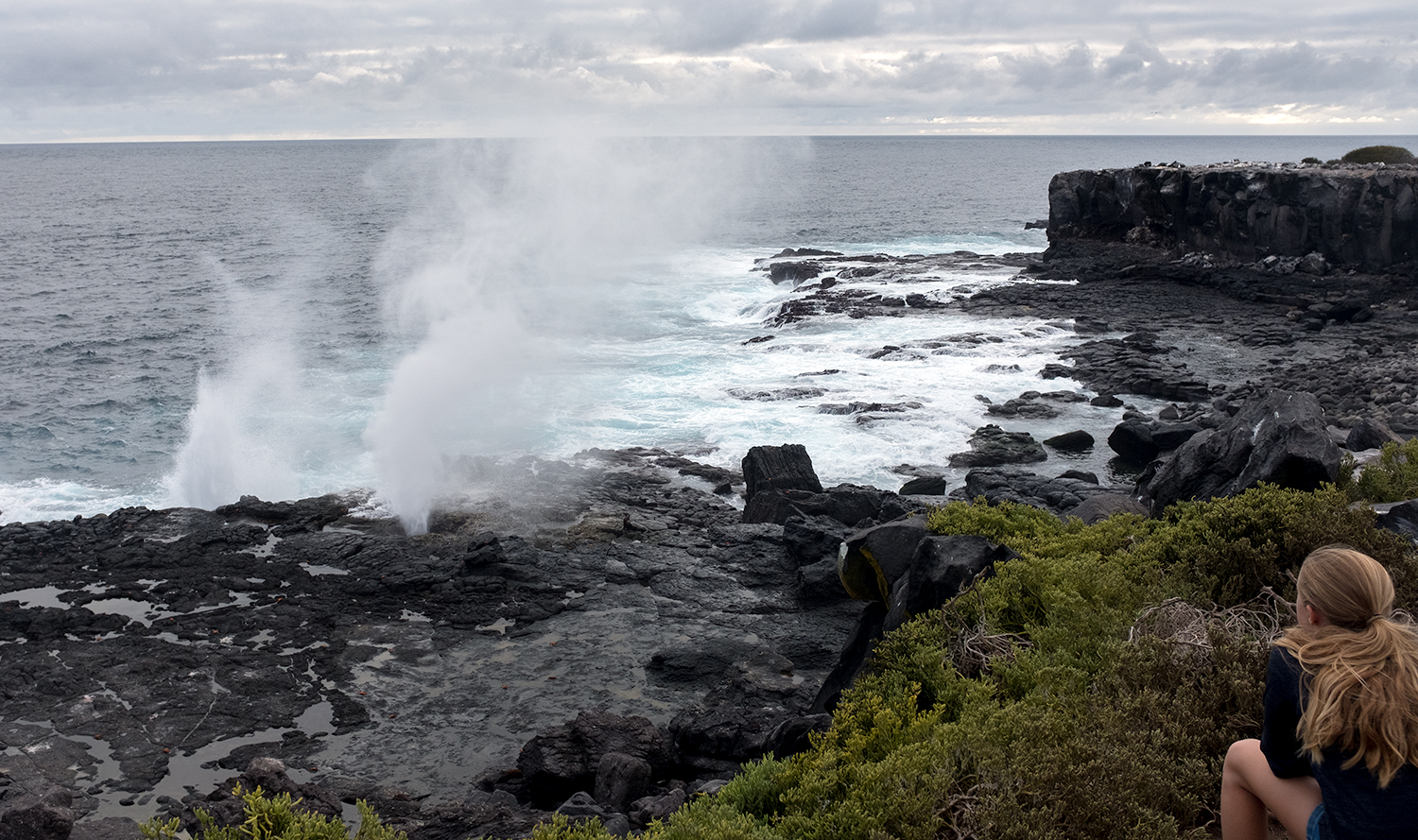 Getting Wet
Getting Wet
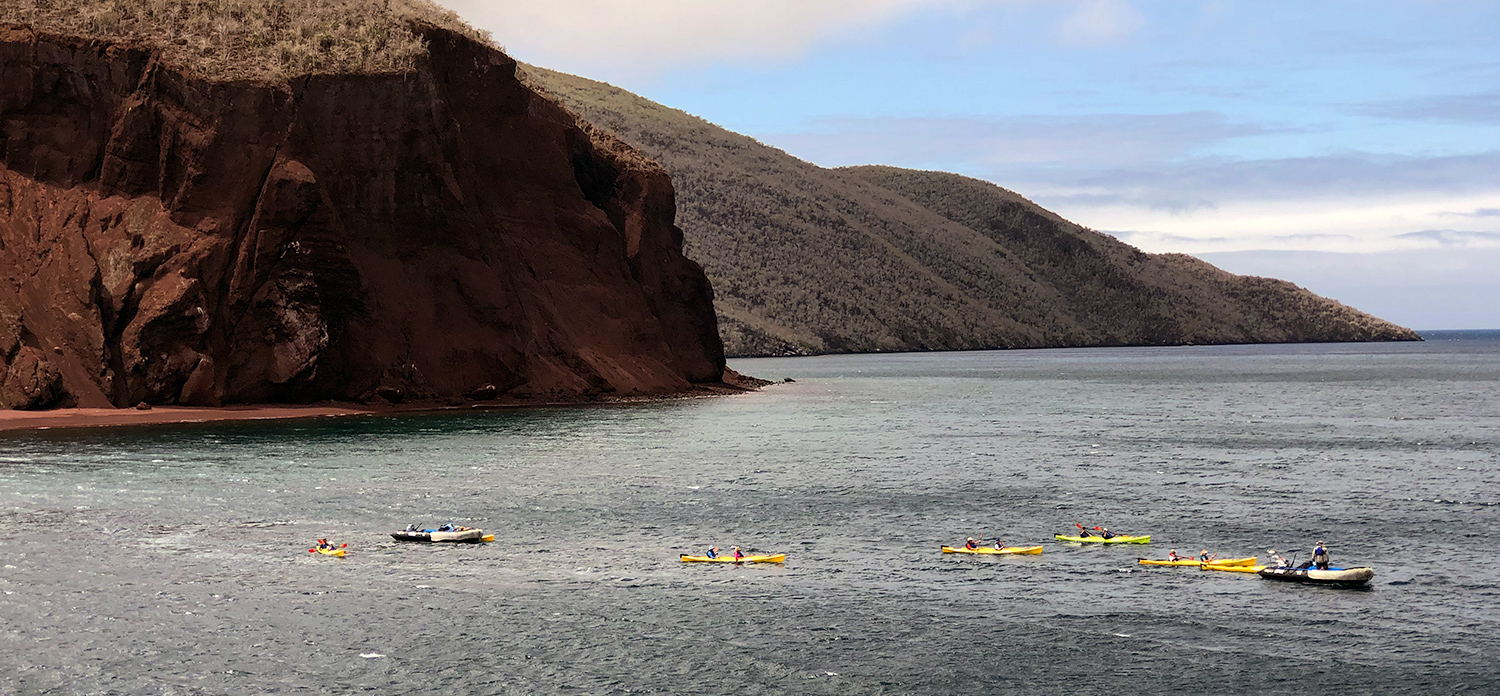 If your list of favorite friends does not include a shark, sea kayaking was offered.
If your list of favorite friends does not include a shark, sea kayaking was offered.
